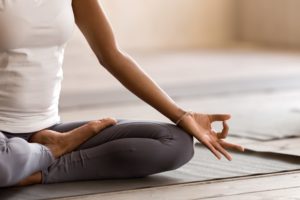Power Nap
Napping is a popular way to relieve tiredness and feel more alert. Although napping for too long can leave people feeling dazed or groggy, a well-timed power nap can effectively relieve fatigue and increase focus for up to several hours.
Tiredness from insufficient or poor sleep can affect health, safety, and the ability to function in general. A power nap can be a powerful tool for anyone who experiences sleep deprivation, including people working the night shift, travelers who cross time zones, students, and anyone who has trouble getting enough sleep.
What Is a Power Nap?
A power nap is a planned short period of sleep that can relieve tiredness and help a person feel alert again.
For a power nap to be effective, it needs to be timed so that a person wakes up when they are in the early and lighter stages of sleep . This helps to minimize an experience called sleep inertia, which is the dazed, sluggish feeling commonly experienced after waking from a long nap.

How Long Should a Power Nap Be?
Research shows that 10- to 30-minute power naps are refreshing and can make a person feel more awake. In particular, napping for less than 20 minutes improves alertness and functioning right away with little or no grogginess after waking up. Power naps are unlikely to interfere with nighttime sleep if taken in the early or mid-afternoon.
A longer power nap can be helpful if timed so that a person wakes up at the end of a sleep cycle, which lasts about 90 minutes. Sleep is lighter at the end of a sleep cycle, which means a 90-minute nap should only cause a brief period of sluggishness from sleep inertia.
Power Nap Benefits
Power naps are associated with a plethora of benefits, including:
- Reduced fatigue
- Increased alertness and attention
- Improved performance and safety for shift workers
- Better memory
- Decreased reaction time
- Boosted mood
- Improved heart health
How to Take a Power Nap
To take a power nap, set aside 15 to 30 minutes and set an alarm on your watch or phone to make sure you do not oversleep. Before taking a power nap, some people consume caffeine to set the stage for a coffee nap. Otherwise, prepare your environment for uninterrupted and restorative sleep:
- Make sure the room is cool
- Put electronic devices on silent mode and turn off notifications
- Lie down on a bed, mattress, or cot
- Use an eye mask or blackout shades
- Turn off or cover up the light coming from a device such as a clock or a computer
- Put in earplugs
After a power nap, it can help to get outside in the sunshine, expose yourself to bright light, or splash water on your face if you feel any residual grogginess. A cup of caffeinated coffee can also help get rid of sleep inertia, but avoid caffeine within eight hours of bedtime .

Still have questions? Ask our community!
Join our Sleep Care Community — a trusted hub of sleep health professionals, product specialists, and people just like you. Whether you need expert sleep advice for your insomnia or you’re searching for the perfect mattress, we’ve got you covered. Get personalized guidance from the experts who know sleep best.
References
5 Sources
-
National Institute for Occupational Safety and Health. (2020, March 31). Nap duration. Centers for Disease Control and Prevention., Retrieved April 6, 2023, from
https://www.cdc.gov/niosh/work-hour-training-for-nurses/longhours/mod7/05.html -
Lovato, N., & Lack, L. (2010). The effects of napping on cognitive functioning. Progress in Brain Research, 185, 155–166.
https://pubmed.ncbi.nlm.nih.gov/21075238/ -
Hartzler B. M. (2014). Fatigue on the flight deck: The consequences of sleep loss and the benefits of napping. Accident Analysis & Prevention, 62, 309–318.
https://pubmed.ncbi.nlm.nih.gov/24215936/ -
Dutheil, F., Danini, B., Bagheri, R., Fantini, M. L., Pereira, B., Moustafa, F., Trousselard, M., & Navel, V. (2021). Effects of a short daytime nap on the cognitive performance: A systematic review and meta-analysis. International Journal of Environmental Research and Public Health, 18(19), 10212.
https://pubmed.ncbi.nlm.nih.gov/34639511/ -
National Heart, Lung, and Blood Institute. (2022, March 24). Healthy sleep habits., Retrieved April 6, 2023, from
https://www.nhlbi.nih.gov/health/sleep-deprivation/healthy-sleep-habits









